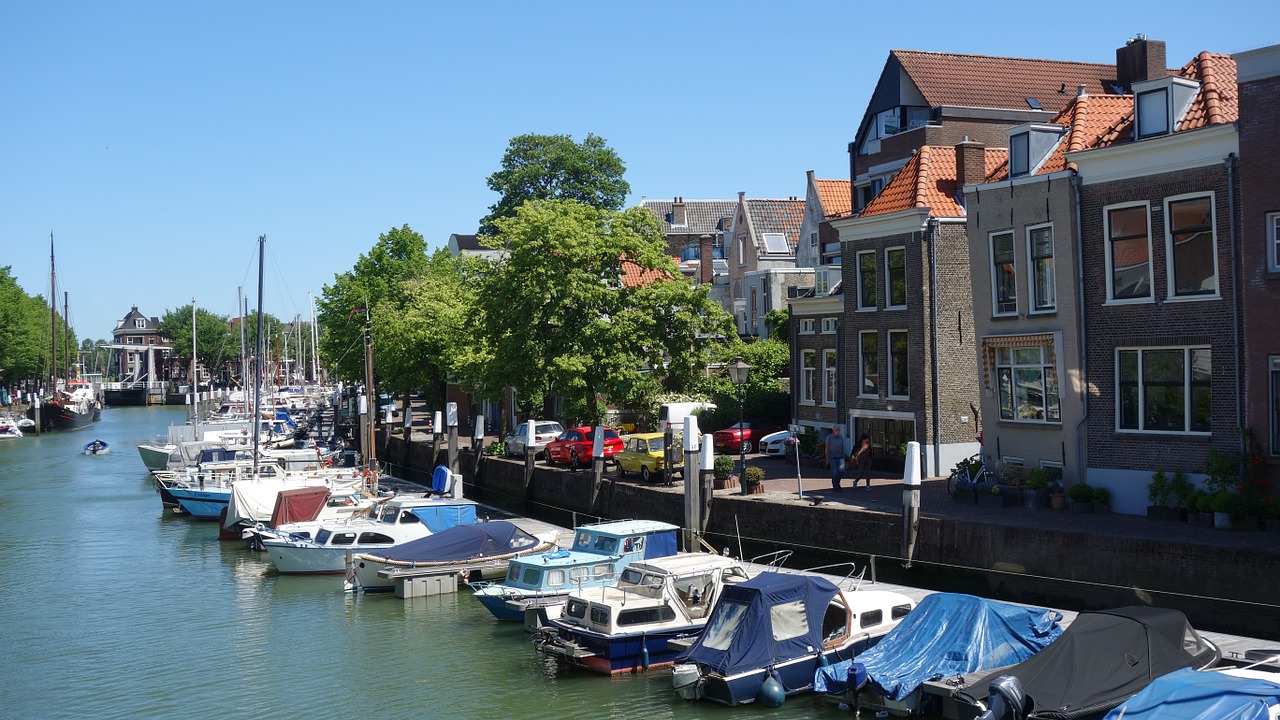Opportunities for U.S. suppliers in the Netherlands marine industry

The Netherlands ranks as one of the world’s leading markets for sailboats, motorboats, and yachts with its strategic location in Europe, main ports, and excellent logistics. According to the U.S. Census Bureau, in 2016, the Dutch pleasure boat market was estimated to reach $3.3 billion; thus offering excellent opportunities for U.S. suppliers of marine technologies. Philip Hammerstein, Commercial Specialist, U.S. Embassy, the Netherlands, discusses these opportunities in the Q&A below. Hammerstein is part of the global U.S. Commercial Service network of 108 offices across the United States and in U.S. embassies and consulates in more than 75 countries that help U.S. companies export.
Q: Can you give a brief overview of the marine Industry in the Netherlands?
Hammerstein: The Netherlands has a population of nearly 17 million and is about the size of the state of Maryland. In total, the country has a half-million boats onshore and in the water. Most of the boats are one of two types of sailing boats: pleasure or open sailing boats, and ones that people can actually sleep on. There are also motorboats which account for less than half of the boat total. The country is renowned for its boat design and manufacturing industry. For example, it is one of the world’s largest super yacht manufacturers (yachts with a minimum length of 79 feet or 24 meters), producing about 20 percent of the world’s total. Along with its large production, the country serves as springboard for selling across Europe, which could yield good opportunities for U.S. yacht material and equipment suppliers.
Q: What are some growth trends and opportunities for U.S. suppliers in this market?
Hammerstein: Green and environmentally friendly technologies are major trends, so green energy is on the rise. There is an upward trend in smaller boats being powered by electric engines, solar-power, and system integrators. U.S. firms, which mainly supply parts and engines, and in some cases entire boats, are adjusting to meet these trends. Overall, many types of boating equipment and supplies are selling well. Marine electronics in great demand include global positioning systems, marine communications, direct dialing communication systems, fluxgate compasses, electronic charting, versatile screen displays, and interfacing. Other types of less-sophisticated basic boat parts, equipment, and supplies are also enjoying good sales, and there is a good market for prefabricated boat construction materials. The use of information technology and online access represents a major growth area for the boating industry—as people connect wireless applications to smart phones, so too are they connecting electronically to their boats.
Q: Are there any major differences between U.S. and Netherlands markets when it comes to preferences in boats and equipment?
Hammerstein: The two markets differ in that the Netherlands has more sailboats than the United States, and motorboats in the Netherlands have smaller engines compared to similar-sized boats in the United States. With regard to engines, there are speed restrictions here in the Netherlands, which is one of the reasons for smaller engines. In addition, there are only a few areas where people can water ski, such as on parts of the lakes. Also, because gas is much more expensive in the Netherlands than in the United States, it makes more sense to have smaller engines as it is more cost effective. That is a big difference compared with the United States, where power boats with larger engines and water scooters are popular.
Q: Are there any supply chain opportunities for small and medium-sized U.S. companies?
Hammerstein: Absolutely. The Netherlands is an entry point to Europe largely due to its specialized logistics, warehousing and great main ports. U.S. boat suppliers can easily enter the Netherlands overseas with Rotterdam as an important hub for boats. Moreover, it is a central location and offers great tax advantages. There are some special ways the Dutch deal with value-added tax, and while that’s more of a technical issue, in the end it can save U.S. suppliers a lot of time and money. Therefore, because the Netherlands is always so focused on logistics, I think this is one of the best countries for setting up a European distribution hub.
Q: What types of advantages might U.S. marine technology have over other foreign competitors?
Hammerstein: No. 1 is good quality. The U.S. is known for making and delivering great products, and the Dutch are very tuned into that as they look for high quality marine boats, technologies, and after-the-sale service. Second, the United States is strong in research and development, where much of the innovation originates. Major U.S. competitors include the United Kingdom, France, Italy, and Germany.
Q: What are some challenges for U.S. suppliers selling to the Netherlands?
Hammerstein: Everybody speaks English, but most product labels and packaging need to be translated into Dutch, so U.S. firms should plan accordingly. And the second is the weather in the Netherlands, which is not warm like the Caribbean. For example, since the weather here isn’t always prime for boating, U.S. suppliers should be aware that some products oriented toward good weather can be of less interest here, but may be more suitable for the Southern part of Europe. Examples include water sports products for stand-up paddle boarding, which continues to gain popularity in the Netherlands, but has a much bigger market in Spain, and inflatables for use behind speed boats.
Q: Is e-commerce a platform that could be utilized by U.S. companies in your market?
Hammerstein: Utilizing e-commerce, U.S. suppliers can easily sell from a warehouse in the Netherlands or directly from the United States to the Netherlands. There are multiple platforms focused on new boats, boat rentals, sharing of boats, and parts. As a small country, the Netherlands has strong logistics, and the Dutch are used to having next-day deliveries, which is something U.S. suppliers should keep in mind when doing business.
Q: What are some key market entry strategies for U.S. exporters?
Hammerstein: Depending on the type of product, U.S. companies with smaller products tend to use a distributor, while companies with larger and more expensive products will use an agent. For example, a U.S. firm selling prefabricated boat parts in high volumes would probably use a distributor. Alternatively, a U.S. company selling entire boats, or maybe large engines, would likely use a more specialized agent.
Q: Based on your experience, what are some lessons learned from U.S. companies doing business in your market?
Hammerstein: U.S. firms need to understand that the Netherlands is a fairly small and highly competitive market whose consumers have a sharp eye for high quality products. Also, pay close attention to shipping and other costs, as many companies tend to underestimate extra additional costs. In selling products that require maintenance, know beforehand how to deal with key maintenance issues. Lastly, develop a streamlined process for handling return shipments.
Q: What are some key export tips that a U.S. business should know?
Hammerstein: I’d offer the following tips:
- Look at the competition in the country. Is there a similar product? Look at the price setting of these products and get a good understanding of the value-added tax structure; there are specialists out there to help as well.
- The Netherlands can definitely be used as a first entry point to Europe, so leverage your distributors accordingly.
- The Netherlands is a member of the European Union; therefore, U.S. suppliers should be aware that all products entering the country must bear the CE Mark.
- Take advantage of the U.S. Commercial Service export counseling, business matchmaking, market intelligence, trade shows, and more. For more information, visit export.gov.




